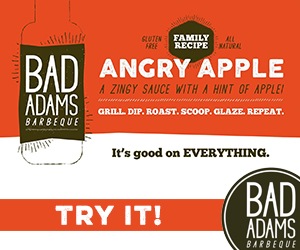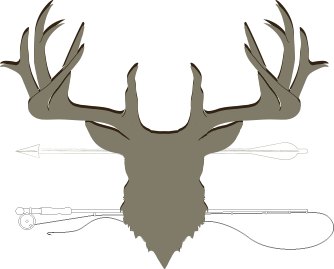Food Wednesday
Here you get history & food….
Food Wednesday June 3, 2020
Seems like with everything going on, some folks are really down in the dumps, edging ever closer to despondency, seemingly with nothing to look forward to. Don’t be silly. If you happen to live in the Northern Hemisphere, come Saturday, June 20 at 4:43 PM Central Standard Time, it’s SUMMERTIME! Not only that, but Saturday, June 6, being the first Saturday in June, means it’s time for the annual Jyllinge Eel Festival when every restaurant in Denmark will be serving fried eel. Just imagine that during the Jyllinge Eel Festival you could walk into any restaurant in Denmark and order your meal with absolute confidence. Given that the country’s National Anthem is “Nunarput utoqqarsuanngoravit”, you get the sense that ordering a meal there could be daunting. OK, that anthem is actually the National Anthem of Greenland, but Greenland is part of the Kingdom of Denmark. It means “You Our Ancient Land” in English.
To the uninitiated, like me for instance, Greenland is a really strange place. It’s the largest island on earth. But wait! What about Australia? Sure, Greenland is big, covering over 836,000 square miles, but Australia covers nearly 3 million square miles, so why isn’t Australia the largest island on earth?
Geographers at the University of California, Santa Barbara took a mighty shot at explaining why Greenland is construed to be an island while Australia is considered a continent. It turns out that what the geographers came up with seems a whole lot like gobbledy gook. They go on and on about tectonic plates or some such, but the bottom line is that the 56,000 residents of Greenland consider Greenland to be an island while the 22 million residents of Australia consider Australia to be a continent, so there you go. That makes Greenland the least densely populated territory on earth. And fully ¾ of those 836,000 square miles is tundra. It is unknown if the residents of Greenland have ever been asked if they are concerned about global warming.
During the 10th century, Norsemen famously began to inhabit Greenland, the most famous of the famous Norsemen being Leif Erikson who sailed to the Caribbean islands 500 years before Christopher Columbus.
Speaking of Christopher Columbus, here’s something else to look forward to: June is National Beef Steak Month, I kid you not. Back in 1493, when Chris was making his second voyage to the “New World”, a Spanish nobleman was on board as a “gentleman volunteer” and that guy’s name was Juan Ponce de Leon. That second voyage landed Chris and the guys on what is now the Dominican Republic and there they off loaded some really special cargo. Cattle.
Ponce de Leon really became an enthusiastic explorer in his own right. In 1509, he became the first governor of Puerto Rico and demographers estimate that fully 30% of the current population of Puerto Rico is descended from Ponce and his wife. In 1513, he led an expedition which ran into a big old peninsula named La Florida and became the first known Europeans to step foot thereon. The expedition left Florida, but in 1521, Ponce returned determined to establish a Spanish colony there. Unfortunately, the native Calusa took firm exception to Ponce’s idea of Spanish colonialism and they did him in and the colony was abandoned. But not before descendants of those cattle set loose in the Dominican Republic were released onto Florida.
In 1519, a couple of years before Ponce ran into Florida, another Spaniard by the name of Hernan Cortes de Monroy y Pizarro Altamirano, who shall obviously be referred to henceforth as “Cortes”, ran into what would become Mexico. He overthrew the Aztec Empire and was awarded the title of Marques del Valle de Oaxaca, but we’re still just going to call him “Cortes”. And bless his heart, just like Ponce would do two years later, Cortes also brought some of those Dominican cattle to Mexico.
About 10,000 years ago, there was a bunch of wild bovines called aurochs which humans wisely domesticated for both meat and dairy. Then the aurochs became extinct. Not to worry, those cattle Cortez brought to Mexico turned out to be not only really smart, but really tough also. By 1690, those smart son of a guns had migrated north where their descendants would become known as Texas Longhorns. Even before that, English settlers had established cattle in the Jamestown colony in 1611 and in 1623, the English Devon breed was imported to the Plymouth colony.
America was built on cattle. Cows provided milk and bulls provided drafting and plowing and they all provided quality beef. Then in 1817, a new breed of cattle was imported into Kentucky. That new breed had been developed in Hereford, England and for the next 150 years, Hereford cattle comprised the dominant breed in America.
It was after the Civil War ended in 1865 that westward expansion of the nation would lead to beef as the primary American food staple. Lots of that land in the westward expansion was covered in native grasses on land unsuitable to grow food crops. But cattle loved those native grasses. A new set of folks called “cowboys” were soon driving cattle for hundreds of miles to feedlots where the cattle were fattened up on grain, then loaded up on trains and sent to the Midwest for processing.
Inevitably, ranchers began looking into breeding higher quality cattle. So were breeders over in Aberdeenshire and Angus counties of Scotland who had cleverly named their new breed of cattle Aberdeen Angus. Breeders in Kansas heard about the new breed, and the first of the breed arrived in Kansas in 1873. When those cattle got to Kansas, they were referred to simply as Angus.
Angus might be the prettiest animals on earth. They are medium sized, muscular and that deep black coat shines like new money in the sunshine as well it should. To top it all off, Angus are natural polls which means they don’t have horns and that is a huge plus when you have to be around cattle all day.
By the late 1960’s, Angus had overtaken Herefords as the dominant breed in America. Today Angus comprise about 60% of American beef cattle. Angus are also hugely popular in Japan and the Japanese know lots about cattle. Great as Angus are, however, it is not the most well-marbled beef in Japan. That award, of course, goes to Wagyu beef. For the record, “Wa” means Japanese and “Gyu” means cow, so there you go again.
The very finest of the Wagyu beef is grown in the region of Japan known as Kobe. All Kobe beef is Wagyu, but only Wagyu grown in Kobe can be called “Kobe”. “Kobe style beef” sold as Wagyu beef is really, really good. But if you want real Kobe beef, a steak is going to cost around $200.00 and even a Kobe hamburger will run you $50.00. So thank goodness for Kobe style beef.
There are about 1 billion head of cattle on planet earth with about 65% of those located in India, China and Brazil. The US comes in at fourth place with 94 million head of beef cattle, most of which, of course, are located in Texas. There are about 1 million beef producers in the US of A and 97% of those operations are family owned. They are really good at what they do. The US has 10% of the cattle on earth, but produce 25% of the world’s beef supply. So get out there and enjoy National Beef Steak Month.
Still speaking of cattle, June is National Dairy Month and if that isn’t enough, June 1st was World Milk Day. Milk is so important that it is the State Beverage and/or State Drink of Arkansas, Delaware, Kentucky (you’d think that would be bourbon), Louisiana, Maryland, Minnesota, Mississippi, Nebraska, New York, North Carolina, North Dakota, Oregon, Pennsylvania, South Carolina, South Dakota, Tennessee, Vermont, Virginia and Wisconsin.
Throughout time, just about every mammal has been milked including horses, donkeys, goats, sheep, camels, buffalo, reindeer, yak. But not pigs. It’s never a good idea to try to milk a pig. What is really strange is the vast differences in various types of mammalian milk. For example, good old cow’s milk is 3.5 % milkfat, 8.5% milk solids and 88% water; ewe’s milk (that would be a female sheep for city folks) is 8% milkfat, 11.5% milk solids and 80.5% water; but if you really want a shot of milk, find you a reindeer and milk it which will yield 22.5% milkfat, 14.5% milk solids and only 63% water. Reindeer milk should be really popular in Greenland.
For the time being, let’s just talk about cow’s milk because that’s where we get most of our milk and suffice it to say that modern dairy cattle are machines. The average dairy cow now produces about 12,000 pounds of milk every year. A gallon of cow’s milk weighs in at 8.6 pounds/gallon, so doing the math, the average cow will produce about 1395 gallons of milk a year or nearly 4 gallons of milk each and every day. It’s a miracle. By the way, if you want to take up milking cows, it takes about 350 squirts to make a gallon of milk so we hope you aren’t going to have to milk more than one cow a day.
About 1/3 of the production of milk goes to the manufacture of cheese and, perhaps by coincidence, tomorrow is National Cheese Day. Also, perhaps by coincidence, legend has it that back on June 4, 1070, a young shepherd was catching a cat nap in a natural Combalou cave of the Roquefort-sur-Soulzon region of France when he awoke and saw a beautiful shepherdess in the distance. So he left his meal of rye bread and sheep’s cheese to run to the shepherdess. When he returned months later (they must have really hit it off), he found his meal covered in blue green mold, evidently ruined. Nevertheless, he tasted the moldy cheese and found it delicious and that’s undoubtedly how Roquefort became the king of cheeses.
Even today in order to be called Roquefort, the cheese must still be aged in those Combalou caves. The mold which causes that characteristic blue green color is Penicillium roqueforti. Of course, with something as good as Roquefort, other countries are going to get in the game. The Brits have their Stilton, the Italians their Gorgonzola and the Danes, bless their hearts, have Danablu. In America, we have Maytag blue cheese which is produced from homogenized milk through a process discovered by Iowa State University in 1941. Fred Maytag II began producing cheese utilizing the process. He’s also the guy that came up with the idea of an electric dishwasher.
90% of the cheeses sold in the US are cheddar type cheese. To make cheddar cheese, the curd is finely chopped or “cheddared” to drain the whey and is then pressed into those gorgeous cylinders or blocks as the case may be. The cylinders or blocks are then cut into saleable portions so we can make the best nachos on earth. Longhorn and Colby cheeses also, of course, make passable nachos.
Today is National Egg Day. Modern laying hens, like modern dairy cows, are machines. The average laying hen will produce 266 eggs a year. Perhaps coincidentally, perhaps not, the average person is going to eat the equivalent of 254 eggs a year, so just one laying hen will get the average person almost through an entire year.
The USDA has implemented a grading system for eggs. There are Grade AA eggs, Grade A eggs and Grade B eggs. I have never personally seen a Grade B egg for sale anywhere. The seemingly ingrained problem with the grading system is that you have to crack the egg to determine the grade unless you are really astute at “candling” an egg. So theoretically, any egg could be graded AA and you would never know the difference. At least until you cracked it.
According to USDA guidelines, a grade AA egg “when first broken, the egg spread remains compact; has a clear thick albumen (the egg white) with prominent chalazae (the white tissue bands that keep the yolk in the center of the white) and a firm, centered yolk.
A grade A egg “when first broken, the egg spreads slightly; has a clear, reasonably firm albumen with prominent chalazae and a firm fairly high yolk.
A grade B egg “when first broken, the egg spreads over a wide area; has a clear, watery albumen and an enlarged, flattened yolk. OK, so what does it taste like?
June is also California Avocado Month, Georgia Blueberry Month, National Soul Food Month, National Candy Month as well as National Dairy Alternative Month. But it’s almost SUMMERTIME and there is work to be done, so we’re out of time for this week. We’ll try to take up everything next week, with the possible exception of National Dairy Alternative Month.
Before we go, however, since we were speaking of cowboys, Red Steagall was born back in 1938 up in Gainesville, Texas which is home to about 16,000 really good folks up on the Red River in Cooke County. Red grew up to be pretty much the consummate country poet/singer and last year he wrote a song called “Hats Off to the Cowboy”. It’s pretty appropriate for current events, so here are some excerpts:
The city folk think it’s all over
That the cowboy has outlived his time
An old worn-out relic, a thing of the past
The truth is he’s still in his prime.
Hats off to the cowboy, he’s still riding tall
He’s a throwback to the days on the trail
He honors his Lord and the men he works for
His saddle is never for sale.
The cowboy’s the image of freedom
The hard ridin’ boss of the range
His trade is a fair one, he fights for what’s right
And his ethics aren’t subject to change.
Hats off to the cowboy, he’s still riding tall
Still saddles a rough string with pride
He’s a shining example of the life that we love
He’s showing us all how to ride.
He still tips his hat to the ladies
Lets you water first at the pond
He believes a day’s wages is worth a day’s work
And his handshake and word are his bond.
Hats off to the cowboy, he’s still riding tall
He lives by the cow country code
That’s respecting your neighbors, your family and friends
And totin’ your share of the load.
Hats off to the cowboy, he’s still ridin’ tall
Don’t let him ride out of your sight
‘Cause the day he rides off in the sunset alone
Is the day that America dies
Don’t let America die.
Remember that Saturday is the 76th anniversary of D Day. Time flies.
That is all I can recall at this time. See you next week.


